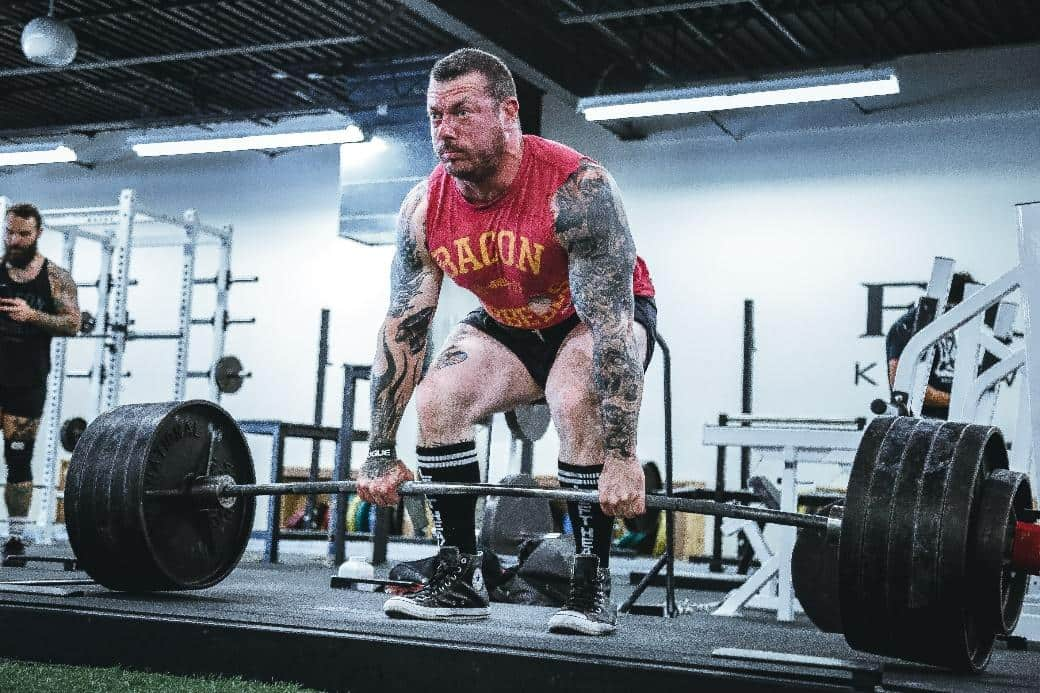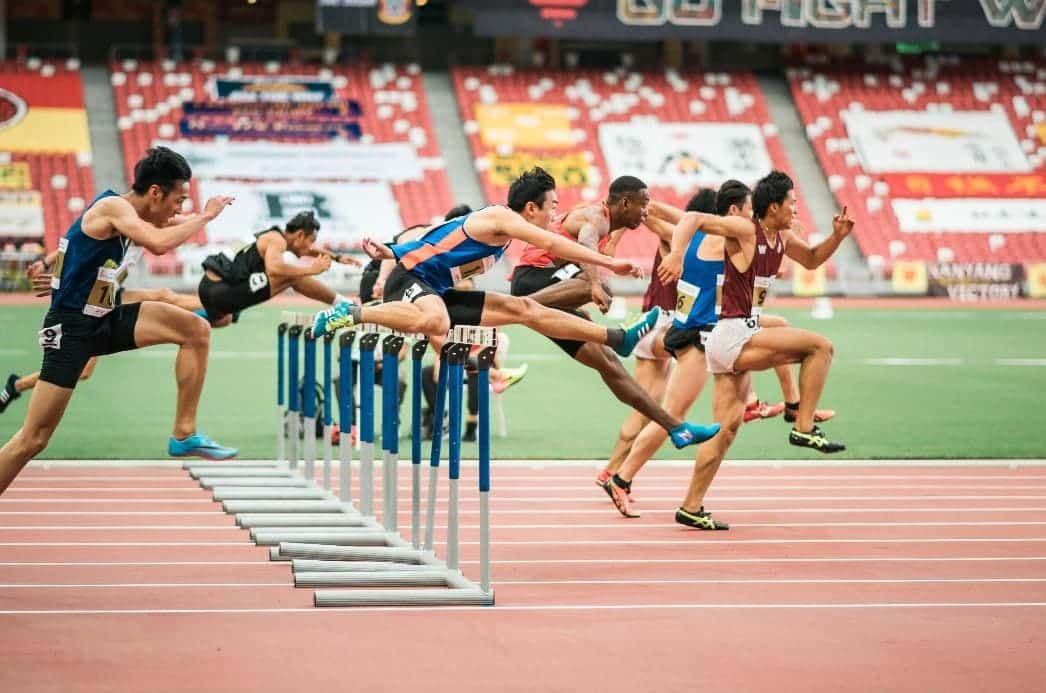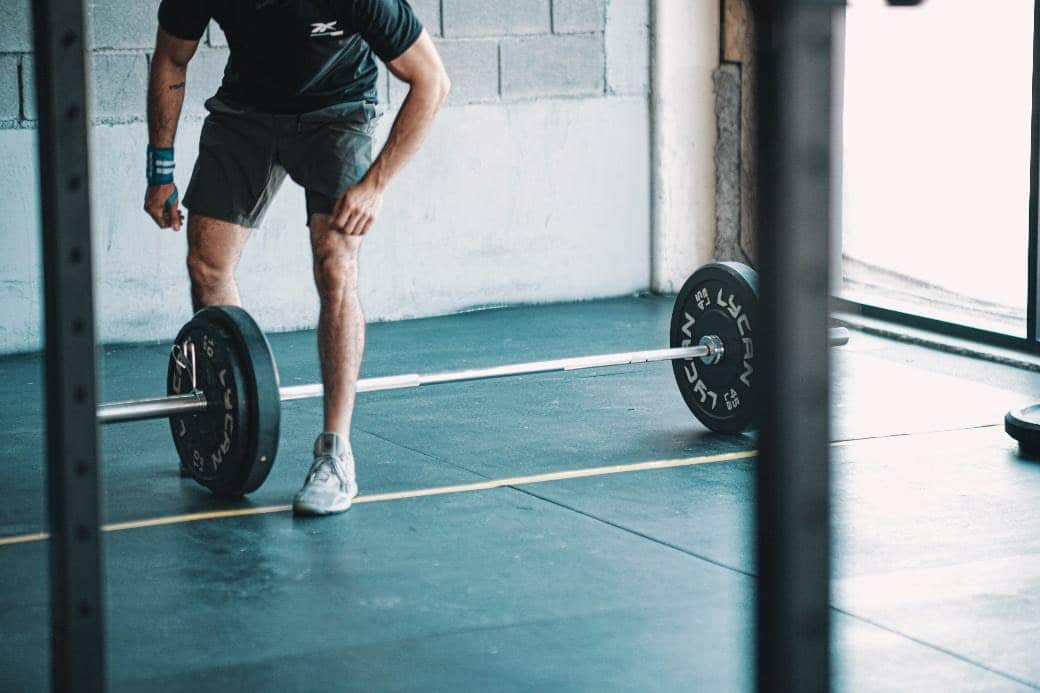13 de April de 2023
Vbt and S&C, a winner combination for elite athlete’s
VBT to Improve Strength and Conditioning (S&C)

Velocity-based training (VBT) is one of the most exciting strategies for strength and conditioning (S&C) training. The use of increasing technology to measure the speed at which we move the load has made the association between VBT and S&C training a clear winning combination (Balsalobre-Fernandez & Torres-Ronda, 2021). There are so-called gold standard devices that are of high cost and are used in the laboratory to obtain accurate measurements for research or a given performance goal.
In the case of measuring the speed at which a load moves, the gold standard is 3D optoelectronic three-dimensional motion capture (Weakley et al., 2021). However, this apparatus comes at a high cost and is impractical outside the laboratory, both in terms of transporting it and setting it up for several athletes at once (Callaghan, Guy, Elsworthy, & Kean, 2022). To alleviate these drawbacks, a long list of speed measurement devices have emerged, such as Vitruve’s, which aim to obtain reliable and accurate data, but at a much lower cost and can be easily transported and used with several athletes at once (Fritschi, Seiler, & Gross, 2021).
The problem with many of the options that measure running speed is their complexity, reliability and validity. Vitruve’s device has scientific backing that shows its accuracy in measuring the same as a gold standard, in addition to having great ease of use and cost. Linear transducers, including the Vitruve device, are the most reliable and valid tool of the different existing technologies (Thompson, Rogerson, Dorrell, Ruddock, & Barnes, 2020; Weakley et al., 2021). All this makes it an excellent option to use when performing speed-based training.
What’s VBT?
Before continuing to talk about velocity-based training (VBT), it is necessary to briefly define it. VBT is a method that replaces the traditional system when programming strength training, since it allows prescribing loads, sets and number of repetitions in a much more precise and individualized way than the traditional method (Zhang, Feng, Peng, & Li, 2022). Technological advances and improvements now allow us to obtain instantaneously the speed at which we perform a jump or move a load in the weight room (Zhang et al., 2022).
Thanks to that data, and the scientific literature that already exists and continues to be published, we can much better control the training stimulus and associated fatigue (Dorrell, Smith, & Gee, 2020). VBT is nothing more than lifelong strength training, but adding a device like Vitruve’s that measures the speed at which we are training. With this information we achieve a great leap in quality in the training of our athletes, making the combination of VBT and S&C training especially attractive and interesting.
VBT Relations with S&C has Left Traditional Methods Behind

VBT and S&C training is an association that coaches are slowly becoming aware of, despite having existed for decades (J. J. González-Badillo & Sánchez-Medina, 2010). Many coaches become frustrated with the traditional strength prescription in which the load, sets and repetitions are set without really understanding the effort involved for the athlete. A strength and conditioning (S&C) coach has two basic premises: to improve the athlete’s performance and to prevent injury. With the traditional system, both goals can be achieved, but we are not maximizing them (Thompson, Olusoga, Rogerson, Ruddock, & Barnes, 2022).
The 1RM is the maximum weight the athlete can move a single time. From this measurement, the traditional system prescribes percentages of that load. For example, if the 1RM in a squat is 100kg, you can prescribe work with 70kg, which would be 70% of 1RM. The theory is very simple, but in practice everything changes. The athlete’s 1RM fluctuates daily, either for the worse because of poor sleep or fatigue from previous training, or it can be improved by an effective strength and conditioning program. In both cases, the prescribed loads will not be accurate, being above or below those that should actually be used.
That is one of the reasons why VBT and S&C training are great allies, since we know at every moment the true 1RM of the athlete. If we don’t have a speed measuring device, we won’t know how much fatigue each set is causing and whether we are improving or not. The use of VBT in S&C training provides accurate and objective data to make the sessions much more effective than the traditional method (Held, Speer, Rappelt, Wicker, & Donath, 2022). Most coaches believe that VBT and S&C training should go hand in hand to avoid errors and prescribe sessions optimally (Thompson et al., 2022). The main advances of VBT with respect to the traditional method are (Juan José González-Badillo, Sánchez-Medina, Ribas-Serna, & Rodríguez-Rosell, 2022):
- Extrinsic motivation through the vision of speed on the screen.
- Creation of a strength-speed profile specific to each athlete.
- Prediction of a maximum repetition each day in a fast and efficient way.
- Precise load prescription for each day.
- Daily fatigue control according to speed loss in the set.
Extra Motivation so the Athlete lifts at full Speed

The first reason why VBT and S&C training are a winning combination is very simple: an athlete who sees execution speed will want to move as fast as possible (Włodarczyk, Adamus, Zieliński, & Kantanista, 2021). Beyond other compelling reasons why elite athletes benefit from the use of VBT, this is the simplest: motivation. Vitruve’s VBT device displays on a screen, whether mobile, tablet or similar, the speed at which a movement has been executed.
A motivational extra can be obtained if we see that speed on a screen, so that, thanks to the typical competitive gene of athletes, they will want to move faster and faster. This generates a healthy competition between athletes and between each of them with themselves. In this way, just by the fact of using it, without going into other training variables, we will already be getting our athletes to train at maximum speed (Weakley et al., 2020). Most sports today base their performance on high-acceleration explosive tasks, which fully corresponds to the dynamic of “moving as fast as possible”. Furthermore, repetitions done at maximal intentional speed have been shown to induce greater strength gains and performance improvements than the same repetitions without such intentionality (Juan José González-Badillo, Rodríguez-Rosell, Sánchez-Medina, Gorostiaga, & Pareja-Blanco, 2014; Pareja-Blanco, Rodríguez-Rosell, Sánchez-Medina, Gorostiaga, & González-Badillo, 2014).
Throughout the series, the athlete checks on the screen if he/she is losing speed, so he/she will do his/her best to avoid it. After a few repetitions it will not be possible to maintain the speed due to fatigue, but we will have managed to squeeze each repetition thanks to the incorporation of the Vitruve device in the movement.
Creating a Unique Load-Velocity Profile for Each Athlete

The second reason why VBT and S&C training are a winning combination is the individualization of each athlete and specialization in their sport. There are different curves that associate load-velocity and strength-velocity (Alcazar, Csapo, Ara, & Alegre, 2019). Each sport has different curves. Some like powerlifting need to lift a lot of weight, but regardless of the speed of the lift. Others like boxing require throwing punches as fast as possible, with the load moved being the weight of the arm with the glove, i.e., a low weight.
In turn, each athlete has his or her own strength-speed profile. Ideally, the athlete’s profile should match the demands of the sport. VBT and S&C training are perfectly matched in this respect, since thanks to the speed devices we can establish each athlete’s personal curve. To do this we simply need to perform four lifts in each exercise for which we want to obtain the strength-speed profile.
For example, if our 1RM in squat is 100kg, we will perform a first set with 35kg, a second set with 50kg, the third set with 65kg and the last one with 80kg. Each one of the lifts must be performed at the maximum possible speed. Failure to do so will result in an error in the strength-speed profile. As we lift more weight, the speed at which we move it is less. This generates a straight line that will be the basis of our athlete’s training.
The Vitruve speed measuring device will indicate the speed in each repetition, data that the S&C trainer will use to prescribe the training sessions. If we are looking for our athlete to throw the ball faster in baseball, or hit the ball faster in golf, we will be working the different zones of the load-speed curve, with the ultimate goal of increasing these parameters. This work can only be done accurately with a reliable and valid velocity measurement device such as Vitruve.
Estimating the daily maximum and relative load
The third reason why VBT and S&C training are a winning combination is because the maximum weight we can lift (1RM) in each session will be real, and not based on a test we did some time ago (J. J. González-Badillo & Sánchez-Medina, 2010). In the traditional system we need to perform a series of lifts with increasing loads that bring us closer to the 1RM. That test requires time and energy, two factors that S&C coaches cannot afford to lose. That’s why the test can be performed at specific times during the season, but it will take many weeks to test them again.
That time between 1RM measurements means that the loads used correspond to a percentage of an inaccurate 1RM. By using speed measuring devices such as the Vitruve, we will be able to know the 1RM of each day in a lift. To obtain it, it will be enough to set a weight that we will always use until the next block. In the final part of the warm-up we will ask the athlete to perform a lift with that fixed weight in the basic exercise or exercises of that session. The Vitruve application, depending on the speed at which we have moved the load, will give us the 1RM of that day, and from there we can work with the actual % of 1RM at that moment.Este proceso tan sencillo nos servirá para comprobar si el atleta acumula fatiga de sesiones anteriores, lo que hará que mueva la carga fija más lenta. Digamos que la carga, a pesar de ser The same load means a heavier weight for the athlete that day, and so he/she moves it more slowly. On the contrary, if the athlete is moving the load faster, this indicates that the load is lighter, although we reiterate that it is the same at all times. That increase in speed tells us that the program used is being useful and that the athlete is stronger when moving a load faster (Sánchez-Medina, Pallarés, Pérez, Morán-Navarro, & González-Badillo, 2017).
Daily Accurate load prescription for each day
The fourth reason why VBT and S&C training are a winning combination is that monitoring execution speed allows us to determine the relative load of the day with a lift in the warm-up. As we have seen in the previous paragraphs, we can calculate our actual 1RM each day easily in the warm-up. By having that data, we will be able to adjust the load precisely on each day, working with a percentage of actual 1RM.
The VBT is used in S&C training to prescribe the exact kilos to move in each exercise. The traditional system estimates the 1RM from which we extract the different load percentages. If one day we want to train with 80% of 1RM, with the traditional method it will always be a load that can be more or less close to 80% of the real 1RM of that day. There are days when we will be more or less strong, and days when we will have improved the 1RM we estimated weeks ago. Therefore, we will not really be training with 80% of 1RM, but with an indicative load. VBT allows us to know each day precisely the kilos to move, so that the training is much more accurate.
Daily fatigue control according to speed loss during series

The fifth reason why VBT and S&C training are a winning combination is because of the ease with which we can manage fatigue. The first repetition is usually the fastest in the set. That allows us to be able to program a set based on the loss of speed, relative to that fastest repetition (Zhang, Feng, & Li, 2023). Instead of prescribing a fixed number of repetitions, as the traditional system does, what we will do is set a speed loss, such as 20%. The series will stop when the speed of the repetition is 20% slower than the fastest repetition.
It may seem complex, but it will be enough to enter the percentage of speed loss we want in the Vitruve application, and the device itself will alert us when this happens. A large loss of speed, such as 40%, generates much more fatigue than a small loss of speed, such as 10% (Galiano, Pareja-Blanco, de Mora, & de Villarreal, 2022). We will use one percentage or another according to our objective and the fatigue we can achieve with that session.
Once again, we can see that VBT and S&C training go hand in hand if we want to optimize performance and reduce injuries. Each subject can have a higher or lower degree of effort with a fixed number of sets and repetitions. Subject A can perform a 5×5 at 80% of 1RM with a low degree of fatigue, because he can better withstand that session, while subject B can do the same 5×5 at 80% of 1RM with a very high degree of fatigue. To differentiate between them, instead of prescribing five repetitions, we will ask them to perform repetitions until they lose 20% speed.
Subject A will perform more repetitions than subject B in the face of the same loss of velocity, but the degree of effort will be practically the same (Juan José González-Badillo, Yañez-García, Mora-Custodio, & Rodríguez-Rosell, 2017; Guez-Rosell, Yanez-GarciA, Sanchez-Medina, Mora-Custodio, & Lez-Badillo, 2020). For S&C coaches, what we are interested in is the degree of effort and fatigue, not the number of repetitions they have done, be it 25 or 30 repetitions. In this way, all athletes will receive the same stimulus, even if the training has a different number of sets and repetitions. This is what is known in VBT as “effort index” and allows us to individualize much more with each athlete (Rodriguez-Rosell et al., 2018).
Bibliographical References
Alcazar, J., Csapo, R., Ara, I., & Alegre, L. M. (2019). On the Shape of the Force-Velocity Relationship in Skeletal Muscles: The Linear, the Hyperbolic, and the Double-Hyperbolic. Frontiers in Physiology, 10(JUN). https://doi.org/10.3389/FPHYS.2019.00769
Balsalobre-Fernández, C., & Torres-Ronda, L. (2021). The Implementation of Velocity-Based Training Paradigm for Team Sports: Framework, Technologies, Practical Recommendations and Challenges. Sports, 9(4). https://doi.org/10.3390/SPORTS9040047
Callaghan, D. E., Guy, J. H., Elsworthy, N., & Kean, C. (2022). Validity of the PUSH band 2.0 and Speed4lifts to measure velocity during upper and lower body free-weight resistance exercises. Https://Doi.Org/10.1080/02640414.2022.2043629, 40(9), 968–975. https://doi.org/10.1080/02640414.2022.2043629
Dorrell, H. F., Smith, M. F., & Gee, T. I. (2020). Comparison of Velocity-Based and Traditional Percentage-Based Loading Methods on Maximal Strength and Power Adaptations. Journal of Strength and Conditioning Research, 34(1), 46–53. https://doi.org/10.1519/JSC.0000000000003089
Fritschi, R., Seiler, J., & Gross, M. (2021). Validity and Effects of Placement of Velocity-Based Training Devices. Sports (Basel, Switzerland), 9(9). https://doi.org/10.3390/SPORTS9090123
Galiano, C., Pareja-Blanco, F., de Mora, J. H., & de Villarreal, E. S. (2022). Low-Velocity Loss Induces Similar Strength Gains to Moderate-Velocity Loss During Resistance Training. Journal of Strength and Conditioning Research, 36(2), 340–345. https://doi.org/10.1519/JSC.0000000000003487
González-Badillo, J. J., & Sánchez-Medina, L. (2010). Movement velocity as a measure of loading intensity in resistance training. International Journal of Sports Medicine, 31(5), 347–352. https://doi.org/10.1055/S-0030-1248333
González-Badillo, Juan José, Rodríguez-Rosell, D., Sánchez-Medina, L., Gorostiaga, E. M., & Pareja-Blanco, F. (2014). Maximal intended velocity training induces greater gains in bench press performance than deliberately slower half-velocity training. European Journal of Sport Science, 14(8), 772–781. https://doi.org/10.1080/17461391.2014.905987
González-Badillo, Juan José, Sánchez-Medina, L., Ribas-Serna, J., & Rodríguez-Rosell, D. (2022). Toward a New Paradigm in Resistance Training by Means of Velocity Monitoring: A Critical and Challenging Narrative. Sports Medicine – Open, 8(1). https://doi.org/10.1186/S40798-022-00513-Z
González-Badillo, Juan José, Yañez-García, J. M., Mora-Custodio, R., & Rodríguez-Rosell, D. (2017). Velocity Loss as a Variable for Monitoring Resistance Exercise. International Journal of Sports Medicine, 38(3), 217–225. https://doi.org/10.1055/S-0042-120324
Guez-Rosell, D. R., Yanez-GarciA, J. M., Sanchez-Medina, L., Mora-Custodio, R., & Lez-Badillo, J. J. G. (2020). Relationship Between Velocity Loss and Repetitions in Reserve in the Bench Press and Back Squat Exercises. Journal of Strength and Conditioning Research, 34(9), 2537–2547. https://doi.org/10.1519/JSC.0000000000002881
Held, S., Speer, K., Rappelt, L., Wicker, P., & Donath, L. (2022). The effectiveness of traditional vs. velocity-based strength training on explosive and maximal strength performance: A network meta-analysis. Frontiers in Physiology, 13, 1573. https://doi.org/10.3389/FPHYS.2022.926972/BIBTEX
Pareja-Blanco, F., Rodríguez-Rosell, D., Sánchez-Medina, L., Gorostiaga, E. M., & González-Badillo, J. J. (2014). Effect of movement velocity during resistance training on neuromuscular performance. International Journal of Sports Medicine, 35(11), 916–924. https://doi.org/10.1055/S-0033-1363985
Rodríguez-Rosell, D., Yáñez-García, J. M., Torres-Torrelo, J., Mora-Custodio, R., Marques, M. C., & González-Badillo, J. J. (2018). Effort Index as a Novel Variable for Monitoring the Level of Effort During Resistance Exercises. Journal of Strength and Conditioning Research, 32(8), 2139–2153. https://doi.org/10.1519/JSC.0000000000002629
Sánchez-Medina, L., Pallarés, J., Pérez, C., Morán-Navarro, R., & González-Badillo, J. (2017). Estimation of Relative Load From Bar Velocity in the Full Back Squat Exercise. Sports Medicine International Open, 1(2), E80–E88. https://doi.org/10.1055/S-0043-102933
Thompson, S. W., Olusoga, P., Rogerson, D., Ruddock, A., & Barnes, A. (2022). “Is it a slow day or a go day?”: The perceptions and applications of velocity-based training within elite strength and conditioning. International Journal of Sports Science and Coaching. https://doi.org/10.1177/17479541221099641/ASSET/IMAGES/LARGE/10.1177_17479541221099641-FIG3.JPEG
Thompson, S. W., Rogerson, D., Dorrell, H. F., Ruddock, A., & Barnes, A. (2020). The Reliability and Validity of Current Technologies for Measuring Barbell Velocity in the Free-Weight Back Squat and Power Clean. Sports 2020, Vol. 8, Page 94, 8(7), 94. https://doi.org/10.3390/SPORTS8070094
Weakley, J., Morrison, M., García-Ramos, A., Johnston, R., James, L., & Cole, M. H. (2021). The Validity and Reliability of Commercially Available Resistance Training Monitoring Devices: A Systematic Review. Sports Medicine (Auckland, N.Z.), 51(3), 443–502. https://doi.org/10.1007/S40279-020-01382-W
Weakley, J., Wilson, K., Till, K., Banyard, H., Dyson, J., Phibbs, P., … Jones, B. (2020). Show Me, Tell Me, Encourage Me: The Effect of Different Forms of Feedback on Resistance Training Performance. Journal of Strength and Conditioning Research, 34(11), 3157–3163. https://doi.org/10.1519/JSC.0000000000002887
Włodarczyk, M., Adamus, P., Zieliński, J., & Kantanista, A. (2021). Effects of Velocity-Based Training on Strength and Power in Elite Athletes—A Systematic Review. International Journal of Environmental Research and Public Health, 18(10). https://doi.org/10.3390/IJERPH18105257
Zhang, X., Feng, S., & Li, H. (2023). The Effect of Velocity Loss on Strength Development and Related Training Efficiency: A Dose-Response Meta-Analysis. Healthcare (Basel, Switzerland), 11(3). https://doi.org/10.3390/HEALTHCARE11030337
Zhang, X., Feng, S., Peng, R., & Li, H. (2022). The Role of Velocity-Based Training (VBT) in Enhancing Athletic Performance in Trained Individuals: A Meta-Analysis of Controlled Trials. International Journal of Environmental Research and Public Health, 19(15). https://doi.org/10.3390/IJERPH19159252

